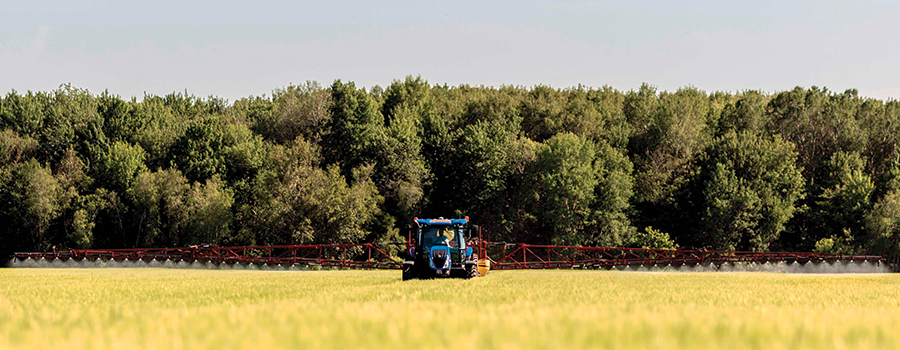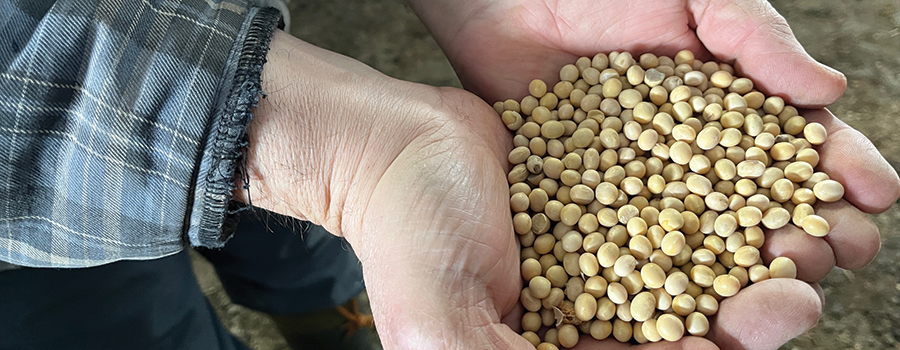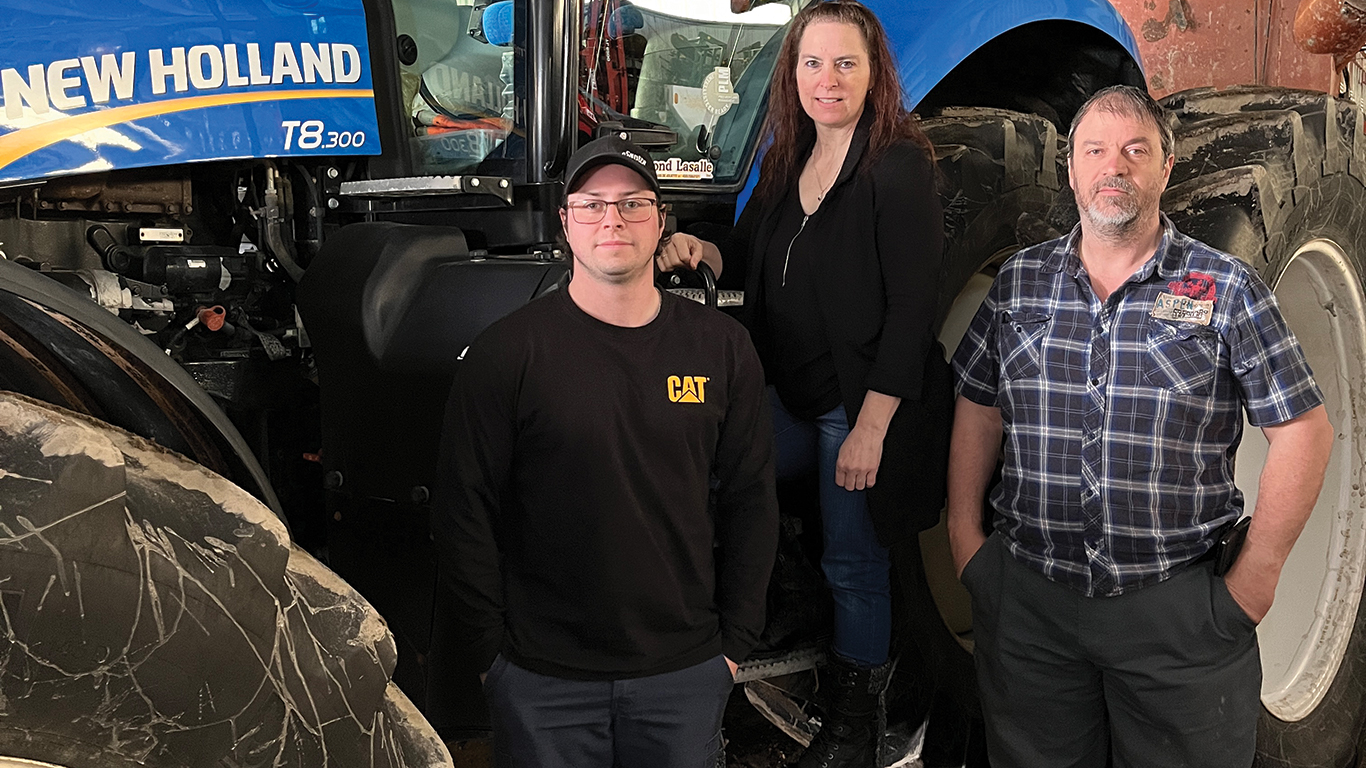Johanne and Jean-François Pagé succeeded their now retired father Normand at Ferme NJ Pagé where they grew up, in Sainte-Élisabeth, Lanaudière. They primarily grow corn and soybeans, and their involvement in the agricultural community allows them to be on the lookout for innovations, which they are often the first to test.
“We like to try things! And this is often how we discover ways to be more efficient, save money or be greener,” emphasizes Johanne Pagé in an interview.


Always on the lookout for new developments in her field, the 52-year-old herbaceous crop producer does not hesitate to test processes and technologies and then share her knowledge. “Involvement in all types of committees allows me to learn about new developments, to share everyone’s experiences and realities. For me, training is not a waste of time, it is enriching, and if I can participate in research, I will. This has subsequent repercussions on my practice. »
Before returning to the farm to support her father, Johanne Pagé wanted to dedicate herself to nuclear medicine, a discipline she studied for a year before changing her mind. A decision he doesn’t regret! Very involved in the agricultural community, she has been president of the Producteurs de grains de Lanaudière since 2019, 2And vice-president of the UPA Autray Union and member of the board of directors of the UPA Federation of Lanaudière (FUPAL).
I was also a city councilor in Sainte-Élisabeth for 12 years and also served on the board of my son’s school. It all started because my father dragged me into a pork producers’ union. I got the bug and it started like this!
Like her brother Jean-François, now in his fifties and co-owner of the farm with her, Johanne was born a few years after her father bought the farm in Rang de la Rivière Sud in 1969. Dedicated to dairy production and pig breeding , the 425 hectare land, located along the meanders of the Bayonne River, is today entirely dedicated to herbaceous crops. “We grow 2,000 tons of corn a year. We also produce 650 tonnes of soya, a crop we have been growing for at least 20 years, as well as 150 tonnes of malting barley and around 20 tonnes of dry peas,” explains Johanne Pagé.


Brother and sister share all the work on the farm, helped by Alexandre, 25, Johanne’s son. While Alexandre spreads the manure, Johanne uses the vibrocultivator and Jean-François takes care of the sowing. He is also the one who sprays the pesticides and drives the thresher. “Only for corn,” explains Johanne, who also does it for other crops. “Because I manage the drying plan for corn. »
Innovative technologies
No employees help them, except occasionally one of their grandchildren, he says. It’s a lot of work for three people, but they get by, thanks in part to the machinery. They do not hesitate to use innovative technologies.
“We have a machine called “moppe”, which is used to eradicate weeds. We used it when our field was overrun with milkweed. This is a rope, twisted around a pole, that is passed across the field, before the soybeans emerge. The rope, soaked in pesticides, passes over the soybeans and only touches the milkweed, which will then die. This prevents the soybeans from being affected by pesticides and is much cheaper. We calculated that with this machine, for a field of 13 hectares, we only need one liter of pesticide, instead of the 15 normally used”, explains Jean-François Pagé.


The manufacturer also claims that it works via GPS for planting, watering with pesticides, and even spreading manure. “We started with GPS in 2005 and little by little we equipped ourselves to do everything. The GPS manages the dosage of pesticides, avoiding watering twice in the same place. Same thing with seedlings. The savings obtained on 500 hectares of field bore fruit already in the first year. It’s also much less stressful on the plants since you avoid having to water them twice. »
The two producers already practice cover crops and want to experiment with intercropping. “Last year we couldn’t due to the temperature that filled the fields with water, but this year, if the weather permits, it’s our plan”, explains Johanne Pagé.


The adzuki bean, a special crop
Sollio looked for producers to experiment with azuki beans and Jean-François and Johanne Pagé raised their hands.
“At first it was very experimental. It’s a somewhat special culture. We sow the azuki and for three weeks nothing happens, then finally it grows! Today producers ask us for advice, sometimes wondering what they did wrong. You just have to be patient! » says Johanne Pagé.
Growing adzuki beans requires taking certain precautions, he continues. “We are satisfied with a small production of 100 tonnes, because we have realized that once sown it is difficult to eradicate. It reseeds, the pods open and fall to the ground. We can’t have azuki in soybeans, so we can’t put them anywhere. »
Additionally, according to his brother, adzuki beans require special attention when planting. “Here we do everything by direct seeding, except for adzuki beans which need soft soil. With the type of soil we have here, heavy clay, direct sowing is not possible. The plant will be shorter and we will harvest half a ton instead of one ton. We must therefore give the vibrocultivator a blow, two inches deep, and then sow”, explains Jean-François Pagé.
